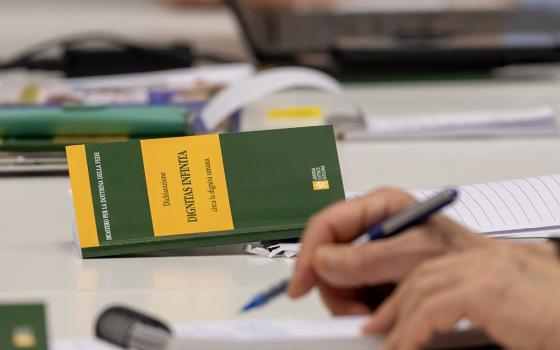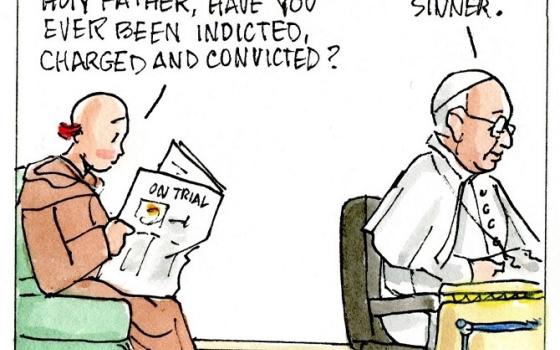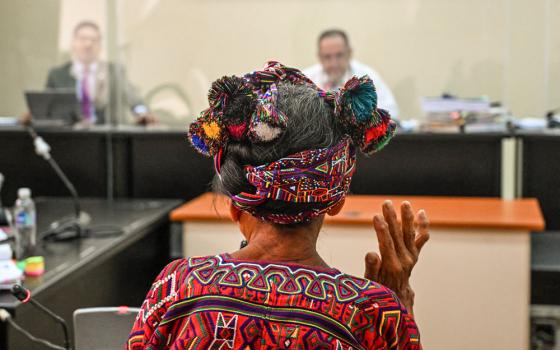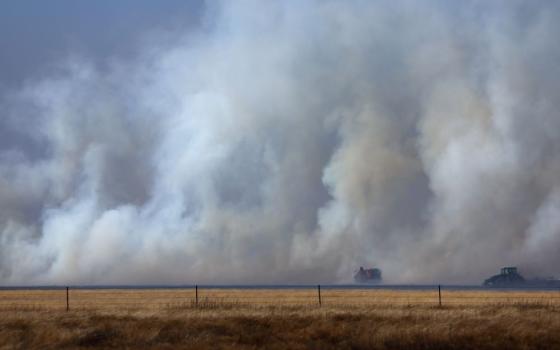"Walk out! Walk out!" This cry rang out throughout the East Los Angeles public high schools beginning on March 1, 1968, and through the first full week of March. Thousands of Chicano high school students walked out of their schools to protest a legacy of school segregation and inferior education.
These actions became known as the "blowouts" and it is estimated that anywhere between 10,000 and 20,000 students walked out of their schools in the largest high school strike in American history.
The term "blowout" was coined by John Ortiz, one of the strike leaders at Garfield High School. John was a jazz fan and he says that when a jazz musician really emphasizes a note, you say that he blew it out. "That's what we were doing," he says of the walkouts, "we were blowing it out."
This year marks the 50th anniversary of the blowouts and there will be a number of commemorative events. At my conference Feb. 23-24 at University of California-Santa Barbara, the Sal Castro Memorial Conference on the Emerging Historiography of the Chicano movement, I organized a special panel on the 50th anniversary by inviting former students in the walkouts to reflect on this special anniversary.
The former students, Mita Cuarón, Bobby Verdugo, Yoli Rios, Cassandra Zacarias, and John Ortiz, gave powerful and inspirational testimonies of their participation in this seminal moment of the Chicano movement of the late 1960s and 1970s.
The Chicano movement was the largest and most widespread civil rights and empowerment movement by Mexican-Americans in the United States to that time. The movement made Chicanos and other Latinos into national political actors and laid the foundation for contemporary Latino political power in the United States, in addition to opening or forcing new opportunities in higher education, political representation, and professional advancement of the likes that had never been seen before.
The blowouts were part of this struggle and a major event of the movement. The school strike was a reaction to decades of segregated and inferior public school education that went as far back as the early 20th century when thousands of Mexican immigrants began to cross the border to work in developing southwestern industries such as agribusiness, railroad maintenance, mining operations, construction, and sundry industrial and service industries. This was the first mass immigration from Mexico to the United States.
As they crossed and worked and settled their families, the public schools appeared in the barrios or Mexican immigrant communities. These became known literally as "Mexican schools." They were segregated not by state laws but by local school boards that believed that Mexicans were racially and mentally inferior and hence did not want Mexican-Americans (most of the children were born in the U.S.) attending schools with white Anglo-American children.
The Mexican schools throughout the southwest and California provided limited classes, limited resources, overcrowded conditions, and a tracking system that stressed vocational education as opposed to an academic one. Worst of all, too many teachers had low expectations of their Mexican-American students and this is the worst crime that a teacher can commit, to believe that their students cannot be challenged to high academic standards. The Mexican schools continued for decades and were well and alive in 1968, although they were no longer called Mexican schools but rather inner-city schools.
It was this legacy of inferior education that the students protested in the blowouts. In their struggle to achieve a better quality education, they were inspired by one of the few Chicano teachers in the eastside schools, Sal Castro, who taught at Lincoln High. It was my honor to publish Sal's story in my 2011 book Blowout! Sal Castro and the Chicano Struggle for Educational Justice.
Sal was a remarkable and charismatic teacher who dared to challenge the inferior and underdeveloped education of his Chicano students and of those attending the other eastside schools such as Wilson, Garfield, Roosevelt and Belmont, and not just in high schools, but also in middle and elementary schools. He was what I call a subversive teacher and an educational muckraker, meaning he was not afraid to subvert and to expose the educational inferiority of the schools in the Mexican-American community. He dialogued with the students inside and outside the schools, and they came to the conclusion that only a major dramatic action would awake and force the educational establishment to change.
Because the efforts of Sal and the students to bring attention to the need for change went unheeded by the Los Angeles School Board and school administrators, the students had no recourse but to take direct action and strike. These were the blowouts that lasted for one week and involved not only the eastside schools but also schools in other areas of the school district in support of the eastside students.
The blowouts shocked the school establishment and the city of Los Angeles. They had no sense of the discontent of Chicano students. The students presented some 50 demands that included bilingual education, a revised curriculum that included Chicano history and Chicano culture, the ending of physical punishment for speaking Spanish on school grounds, more Mexican-American teachers, counselors, and principals, more high schools in the eastside, and, most importantly, a college prep education. "We want to go to college!" the students said and demanded.
The blowouts forced the L.A. school board to listen to the students, and to begin negotiations with their parents and community leaders. Not all of the demands were met and are still not met, such as more high schools to relieve the still overcrowded conditions. Yet still others were accomplished such as more Chicano and Latino teachers, counselors, and administrators, and in time, Latinos elected to the school board itself.
But perhaps the greatest victory was the changed consciousness of the students themselves. They now realized that they, their parents, and their culture were not the problems for their limited educational mobility, but the problem was the schools themselves and the legacy of the Mexican schools. The students through their actions further realized that through their collective struggle, they had the power to bring about change and to make history — Chicano and American history.
"We are American history," Sal told his students. The blowouts were not only a historic moment in U.S. history but in the lives of these students, many of whom went to become educational, political, and community leaders. They became the change makers that Sal Castro called for; those who would have the courage, as he did, to challenge and confront the status quo and those who would deny educational and other equal opportunities for Chicanos and other Latinos.
Advertisement
The 1968 blowouts in Los Angeles were emulated in other southwestern communities to force educational reforms. The strategy of student walkouts and strikes would continue to be employed by students to deal with their grievances, and they were visible just recently as thousands of students throughout the country reacted to the Florida school shootings to demand gun reforms and not allow weapons of mass destruction to be easily bought in this country. The blowouts are still well and alive.
This is what we remember for what occurred 50 years ago. The blowouts remind us that social justice and democracy are not given to us; we have to fight for this and that only through collective struggles can we achieve these goals. This is especially imperative in the age of Trump, which seeks to roll back democratic rights and install an authoritarian state.
We have to heed those niños heroes, the child heroes as Sal Castro called his walkout students. We have to blowout and demand that we will not give up our constitutional rights, and that history is on our side and not on Trump's.







